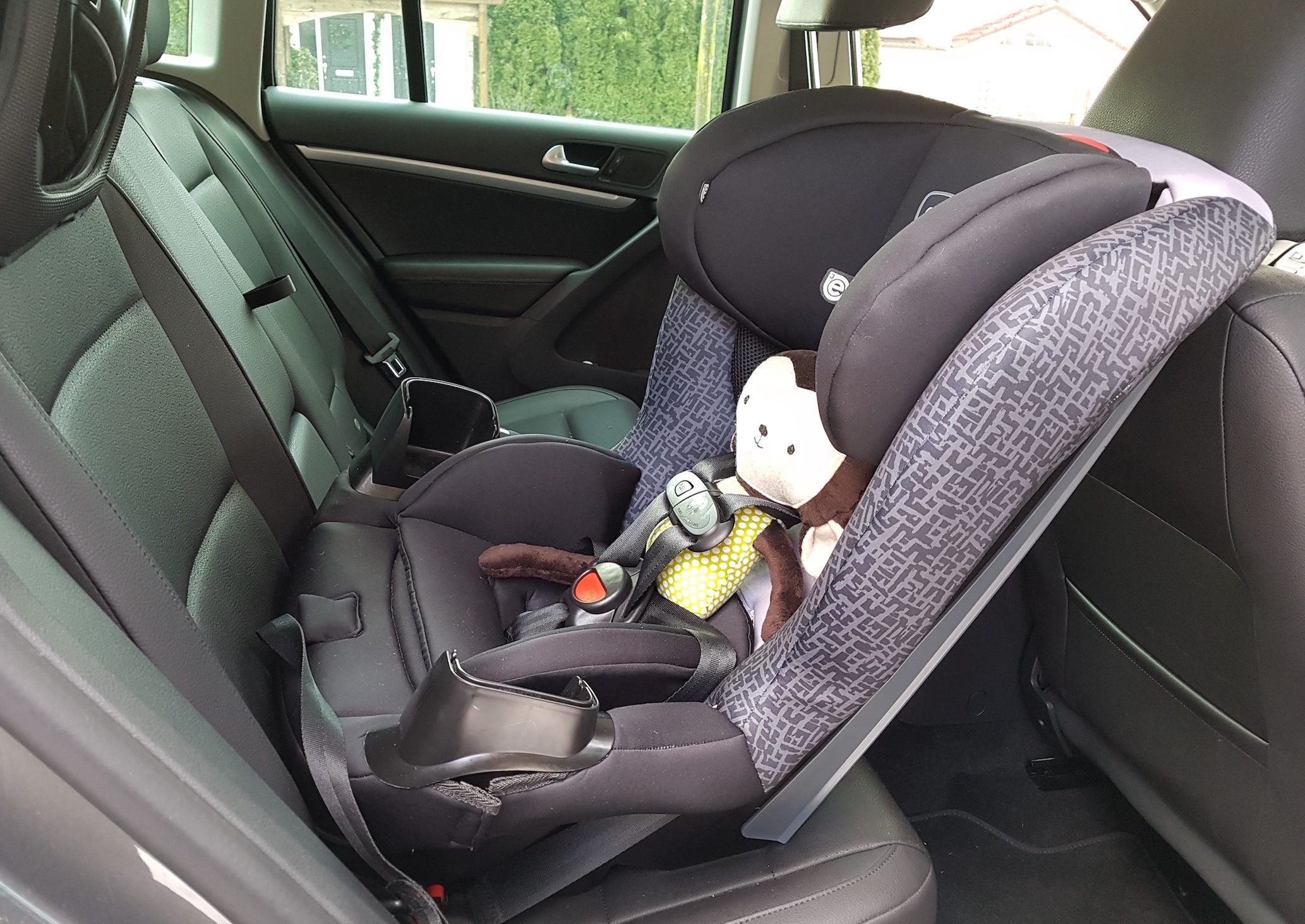 When it comes to keeping your toddler safe during a short or long drive, it’s very important to have the right car seat for them. Car seats have changed a lot in the past couple decades. Seats now have expiration dates, and Transport Canada guidelines around proper seat usage. Be sure to check out your province’s Car Seat and Booster Seat Legislation from the Government of Canada website. Here is some information to help you choose the right car seat for your child.
When it comes to keeping your toddler safe during a short or long drive, it’s very important to have the right car seat for them. Car seats have changed a lot in the past couple decades. Seats now have expiration dates, and Transport Canada guidelines around proper seat usage. Be sure to check out your province’s Car Seat and Booster Seat Legislation from the Government of Canada website. Here is some information to help you choose the right car seat for your child.
Table of contents
Convertible car seats
The most popular choice by today’s parent is definitely the convertible car seat. It is more versatile than a seat dedicated solely to a certain sized child. In many cases it can be the only seat your child will need.
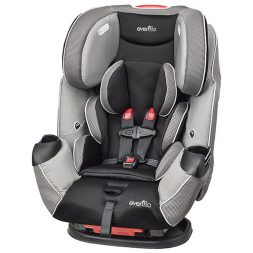
The major difference between car seats for older children and those specifically for newborns is the way your child sits in the seat: infant seats are designed for rear-facing the child. 3-in-1 convertible car seats offer the ability to position it for rear facing when the child is very small, and front facing when the child gets big enough. They can be a rear-facing car seat, a forward-facing car seat, and even a booster seat
They also enable you to adjust the 5-point harness, which must be used up to a certain weight (usually 18kg/40lbs, but always refer to your car seat manual).
2-in-1 Convertible Seats
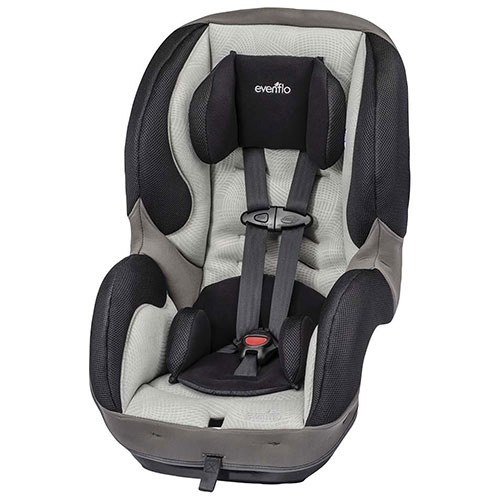
Convertible car seats are also available in 2-in-1 configurations. Some of these seats last from newborn up to 18kg/40lbs, but always refer to your car seat manual to be sure. These seats can be rear facing while the child is very young, and front facing when the child has grown. When their child reaches the maximum size for this seat they would purchase a separate booster seat.
Other 2-in-1 convertible car seats are perfect for parents who started with an infant seat, and when their child is larger than about 10kg/22lbs, want a seat that will last for the next stages of childhood. These 2-in-1 car seats are front facing and easily convert to a booster seat when the child is the appropriate size.
Infant or rear-facing car seats
From newborn to 10k/22lbs
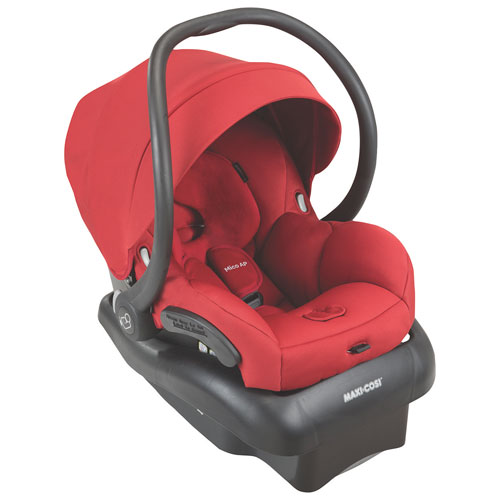
Newborns must be sitting in a seat that is capable of rear-facing. Infant car seats are designed to be placed so the child is facing the back of the car. Parents often choose to begin with them because of they are small and easy to carry with the child safely inside. They also have all the features you’d expect to protect newborns:
- Newborns and growing babies need extra head, neck and muscle protection, so their seats are equipped with proper contouring and padding.
- Infant seats are specially designed to prevent injury during a frontal impact: they help properly divert shock in the event of an accident.
- Most of them also include a 5-point harness system that interlocks with a chest plate and a buttoned buckle between your baby’s legs to keep your baby snug and secure.
All infant car seats have maximum weight and size considerations, so check the manufacturers instructions before purchasing.
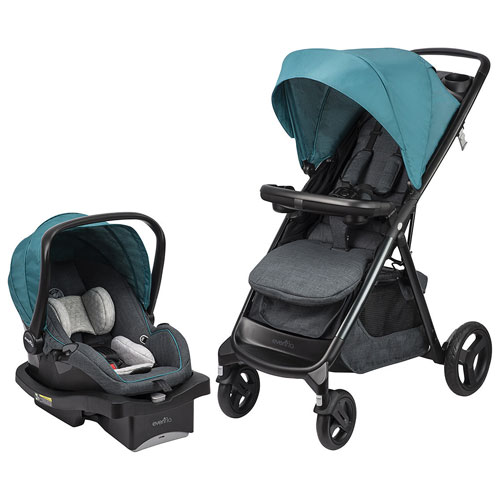 Car seat travel systems
Car seat travel systems
Another advantage of infant seats is that some can be placed right onto a stroller. In fact, some car seats are sold in travel systems, which come packaged with a stroller and a car seat base. With travel systems, the car seat can be attached and detached from the stroller and seat base to allow for easier transportation without disturbing your baby.
Forward-facing car seats
From 10-18kg/22–40lbs
Your child will likely spend more time in this seat than any other type, so you want to be sure you get the very best. Forward-facing seats are best suited for older children with stronger back and neck muscles, but so long as they fit within the weight and height range of his or her rear-facing seat, you should continue to use it for as long as possible.
Also note that many of these seats can be installed as rear-facing for smaller children (from 2kg to 14kg) and then converted to forward-facing until your child is 18kg (or more depending on your seat’s weight range).
Booster seats
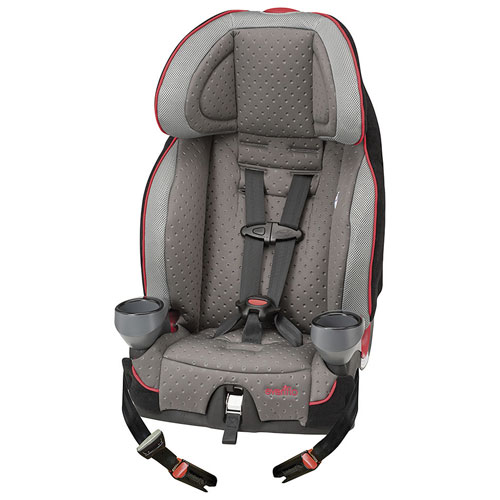
From 18-36kg/40–80lbs
When your child is old enough to graduate to a booster seat, you should be starting them with a high back booster. Until a child is approximately 18kg/40lbs, they should continue using some form of a harness system. High back boosters are similar to infant and toddler seats with their own safety harness system to keep your child safe on the road.
Backless booster Seat
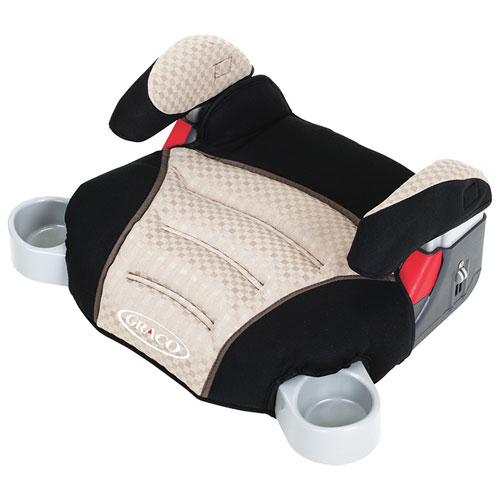
The last phase in your child’s car seat journey is the backless booster (for children over 18kg/40lbs*. Your child simply sits in a backless booster seat and straps on the car’s lap and shoulder belt as usual. They don’t need to use the harness system anymore either. These seats act as a buffer in between your growing child and the car seat to ensure that the belt fits them properly. There is little to no actual installation required with these seats.
| Did you know?
Children should be sitting in some form of booster seat until they’re taller than 145 cm (4’ 9″) |
Car seat installation
There are typically two ways to install a car seat: tethering or belt pathing. Universal Anchor Tether (or UAT) hookups exist for you to install your seat from the bottom. These locking clips fasten to the bolt hookups located in the crook of car seats. You can easily find where your car’s UAT hookups are on most seats through a circular button sewn into the material.
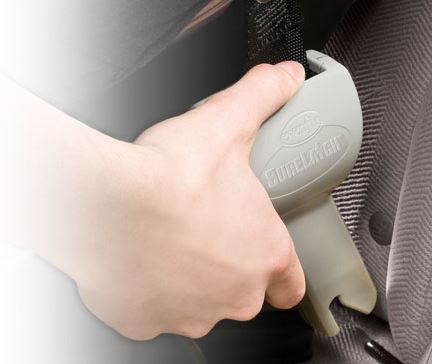 The other way to install is belt pathing. In this method, you pass your car’s lap and shoulder belt through the seat as though you were sitting in it yourself. However, you must activate the child lock (usually accomplished by pulling the belt as far as goes until the locking mechanism kicks in.) From here, you have to slowly feed the belt back while keeping the seat stable until it locks as far as it can while keeping the seat level and straight.
The other way to install is belt pathing. In this method, you pass your car’s lap and shoulder belt through the seat as though you were sitting in it yourself. However, you must activate the child lock (usually accomplished by pulling the belt as far as goes until the locking mechanism kicks in.) From here, you have to slowly feed the belt back while keeping the seat stable until it locks as far as it can while keeping the seat level and straight.
All forward facing high back car seats must be anchored at the top through tether hookups attached to every seat. By law, all vehicles manufactured after model year 1996 should contain these tethers. If you don’t have anchor tethers in your vehicle, you can buy a retrofitting kit. Some car dealerships may even install the retrofitting kit for you.
You must also ensure that your seat is properly level. All car seats come with a label showing the proper angle that a seat should be installed. Some seats even come with a liquid level to help with your installation.
If you don’t feel comfortable installing a car seat yourself or would like somebody to inspect your installation for you, call your local police or fire department’s non emergency line to see if they have trained child passenger safety specialists on staff to assist you.
| Did you know?
Car seats and boosters should always be placed in the back seat of a vehicle. Infant and toddler car seats should not be installed in the front seat. |
Safety check on car seats
Once your seat is properly installed, it’s time to buckle up and go for a drive! Here are a few things to keep in mind when seating your child in their seat.
Infant and baby seats
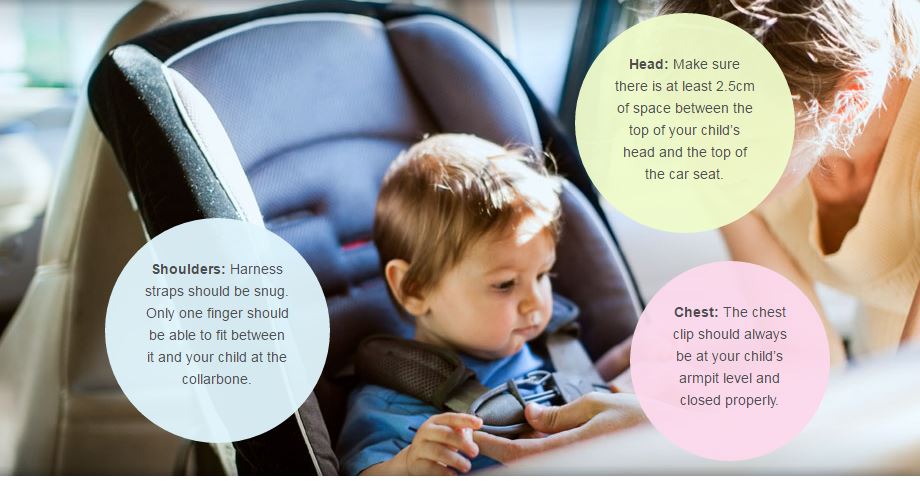
Booster seats
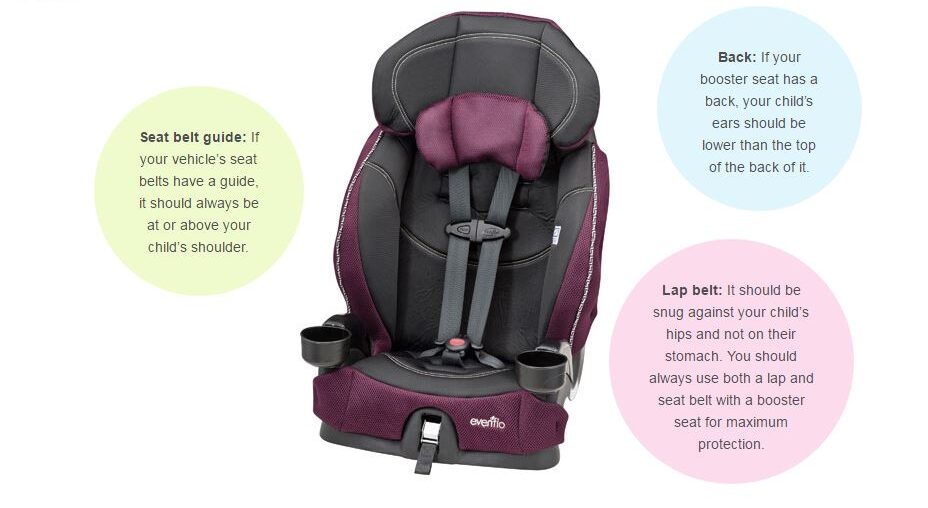
Safety tip: Avoid layers of bulky clothing or heavy coats while seating your child in their car seat. Extra bulk prevents the harness from doing its job and your child’s head and neck will move around too freely. Take your child’s coat off prior to sitting them in their car seat and back on when you take them out of the vehicle.
Expiry dates and registration on car seats
By law, all car seats sold in Canada must clearly display the manufacturing and expiration date somewhere on the seat. Some manufacturers etch the details into the seat so that it cannot be removed while some will place a decal on the seat detailing this information.

Be sure that you always register your car seats with the manufacturer. Registration can lead to contact of important issues related to the seat, such as recalls. All new car seats come with registration cards for mailed or online registration. If you have not registered your seat and are wondering if there have been any recalls on your seat, the Government of Canada maintains a car seat recall database.
| Did you know?
All car seats sold in Canada have an expiration date. Car seat manufacturers can only guarantee the quality of the plastics and buckles used in car seats for a certain period of time. |
Take the next step
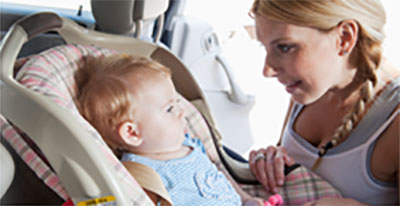 It’s time to shop! With all the information you need to make the best decision, you can check out our online selection of car seats and find the one that’s perfect for your little bundle. We’ll even back them all with our 30-day return policy.
It’s time to shop! With all the information you need to make the best decision, you can check out our online selection of car seats and find the one that’s perfect for your little bundle. We’ll even back them all with our 30-day return policy.



